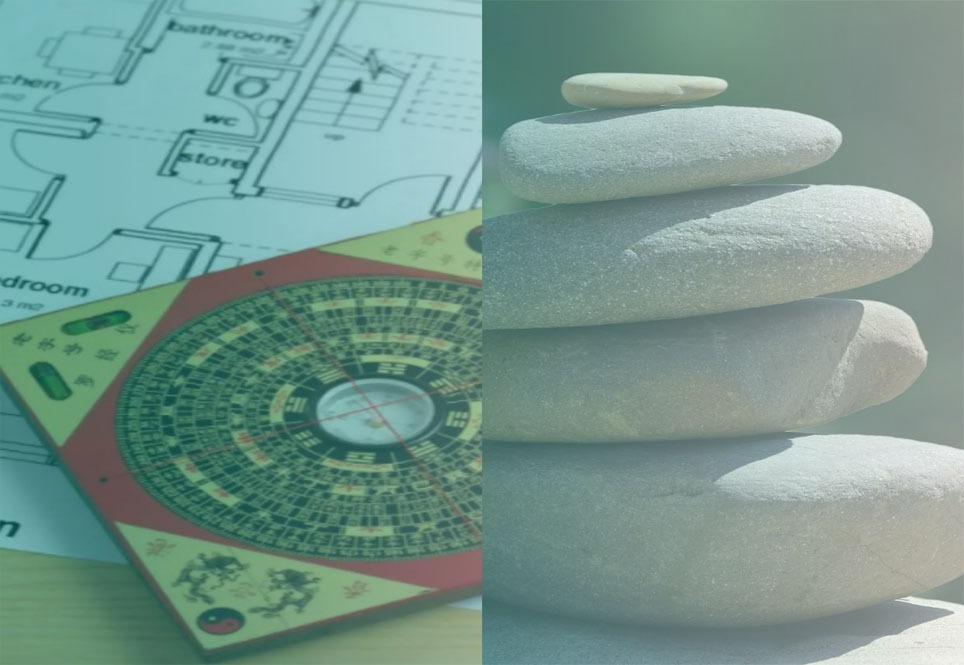
Similarities and differences between Vastu and Feng shui
Similarities between Vastu and Fengshui:
1. Holistic Approach to Living Spaces:
Both Vastu and Fengshui take a holistic approach to the design and construction of living spaces. They recognize the interconnectedness between the built environment, natural elements, and the subtle energies that permeate the universe. These ancient sciences aim to create spaces that are not only functional but also in harmony with the cosmic forces and the laws of nature.
2. Emphasis on Energy Flow:
A fundamental principle shared by Vastu and Fengshui is the importance of promoting positive energy flow within living spaces. Vastu refers to this life force as “Prana,” while Fengshui calls it “Chi” or “Qi.” Both systems provide guidelines for the placement of architectural elements, furniture, and objects to ensure the unobstructed flow of these energies, believed to have a profound impact on the well-being of the occupants.
3. Significance of Directions:
Vastu and Fengshui attach great importance to the cardinal directions (north, south, east, and west) and their associated energies. In Vastu, each direction is associated with specific deities, elements, and influences, while in Fengshui, the directions are linked to various aspects of life, such as wealth, health, and relationships. The orientation of buildings, entrances, and room placements are carefully considered in both systems.
4. Use of Natural Elements:
Both Vastu and Fengshui recognize the importance of integrating natural elements like water, fire, earth, and air into the built environment. These elements are believed to have a profound impact on the energy balance and are incorporated through features such as water bodies, strategic placement of plants, and the use of natural materials in construction.
5. Incorporation of Symbols and Geometry:
Symbolic representations and geometric shapes hold significant meaning in both Vastu and Fengshui. In Vastu, the Vastupurusha mandala and the Swastika symbol carry deep spiritual significance, while in Fengshui, the Bagua (or Pakua) and the Yin-Yang symbol are central to the practice. These symbols and geometric shapes are used to represent cosmic energies and guide the design and placement of architectural elements.
Differences between Vastu and Fengshui:
1. Cultural and Geographical Origins:
Vastu Shastra originated in ancient India and is deeply rooted in the Vedic tradition and Hindu philosophy, while Fengshui emerged from the cultural and philosophical foundations of ancient China, drawing from Taoism and the principles of Yin and Yang.
2. Scriptural Foundations:
Vastu Shastra is based on the principles outlined in various ancient Indian texts, such as the Sthapatya Veda, Brihat Samhita, and Mayamata, among others. Fengshui, on the other hand, finds its foundations in the I Ching (Book of Changes) and the writings of various Chinese scholars and practitioners throughout history.
3. Cosmic Influences:
While both systems acknowledge the influence of cosmic energies, Vastu places a greater emphasis on astrological factors and the alignment with celestial bodies. Fengshui, however, focuses more on the interplay of the five elements (wood, fire, earth, metal, and water) and their corresponding energies.
4. Directional Associations:
In Vastu, the northeast (Ishan) direction is considered the most auspicious, while the southwest (Nairriti) is regarded as inauspicious. Fengshui, on the other hand, associates different directions with specific aspects of life, such as wealth (southeast), health (east), and relationships (southwest), without labeling any direction as inherently auspicious or inauspicious.
5. Remedial Approaches:
While both Vastu and Fengshui offer remedial measures to correct imbalances or defects in the built environment, their approaches differ. Vastu often employs the use of gemstones, colors, and specific rituals, while Fengshui relies more on the strategic placement of objects, symbols, and the manipulation of the five elements.
6. Regional Adaptations:
Vastu Shastra has evolved and adapted to various regional variations within India, with different regions incorporating their own unique interpretations and practices. Fengshui, on the other hand, has remained more consistent in its principles, although it has spread and been adopted in various parts of the world, particularly in East and Southeast Asian countries.
Despite these differences, both Vastu and Fengshui share a common goal of creating living spaces that promote harmony, balance, and well-being. In recent times, there has been a growing interest in combining the principles of these two ancient sciences, recognizing their complementary aspects and leveraging their collective wisdom.
Many contemporary architects, designers, and practitioners have explored the integration of Vastu and Fengshui principles, blending the strengths of both systems to create truly holistic and harmonious living environments. By acknowledging and celebrating the similarities while respecting the unique cultural origins and philosophies, we can unlock the full potential of these ancient wisdom traditions, creating spaces that nurture the body, mind, and spirit.
Ultimately, the similarities and differences between Vastu and Fengshui serve as a testament to the richness and diversity of ancient architectural wisdom, reminding us that the pursuit of harmony and balance transcends cultural boundaries, and that there are many paths to achieving a harmonious coexistence with the natural and cosmic forces that shape our world.




